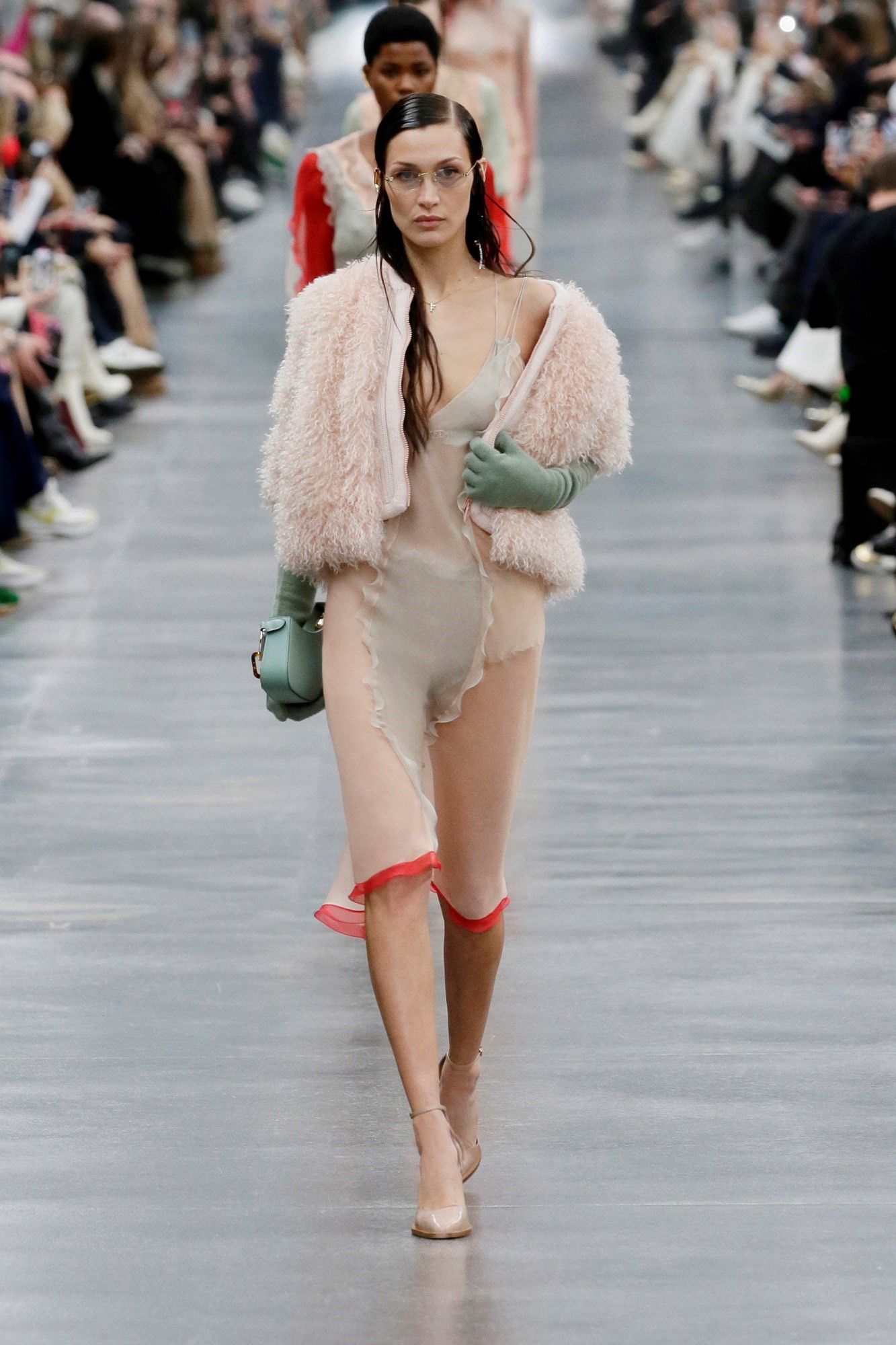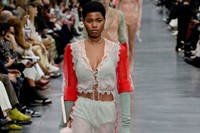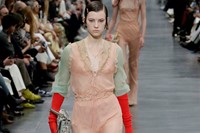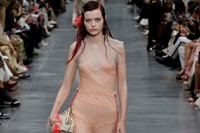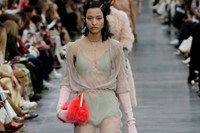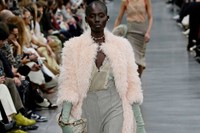Hard and soft, winter but summery, colourful and neutral, historical yet modern, Kim Jones’ Autumn/Winter 2022 collection for Fendi was a big bundle of contradictions, it seems, summed up best – I feel – by an outfit comprising sharply-tailored jacket topping chiffon trousers. The jacket looks masculine – lapels seemingly upturned to cosset the neck and frame the face, though actually cut like that – yet it caves in at the waist. The trousers are transparent, trimmed with a rivulet of ruffles down the side like a hyper feminine tuxedo stripe. They look like a new modern breed of lingerie – and, actually, the whole thing seems like a new proposition for a woman to wear at night.
Jones based his whole collection around that idea – of contrasting tailoring, of which he is a master, with soft, sensuous and feminine dresses. The root of those were the Fendi archives – not some whisper of chiffon from a century ago, back when the house was founded (it celebrates it centenary in three years), but a slick collection from the year 2000. Oddly, that was a movement that proved pivotal for Fendi – coming off the phenomenal success of the Baguette, by 2000 Fendi had become the powerhouse it is today. Silvia Venturini Fendi told me, earlier this year, that around 2000 was when Fendi took back the license for its ready-to-wear and began making the collections itself. It meant the invention and quality sky-rocketed, and it became a kind of renaissance for the house.
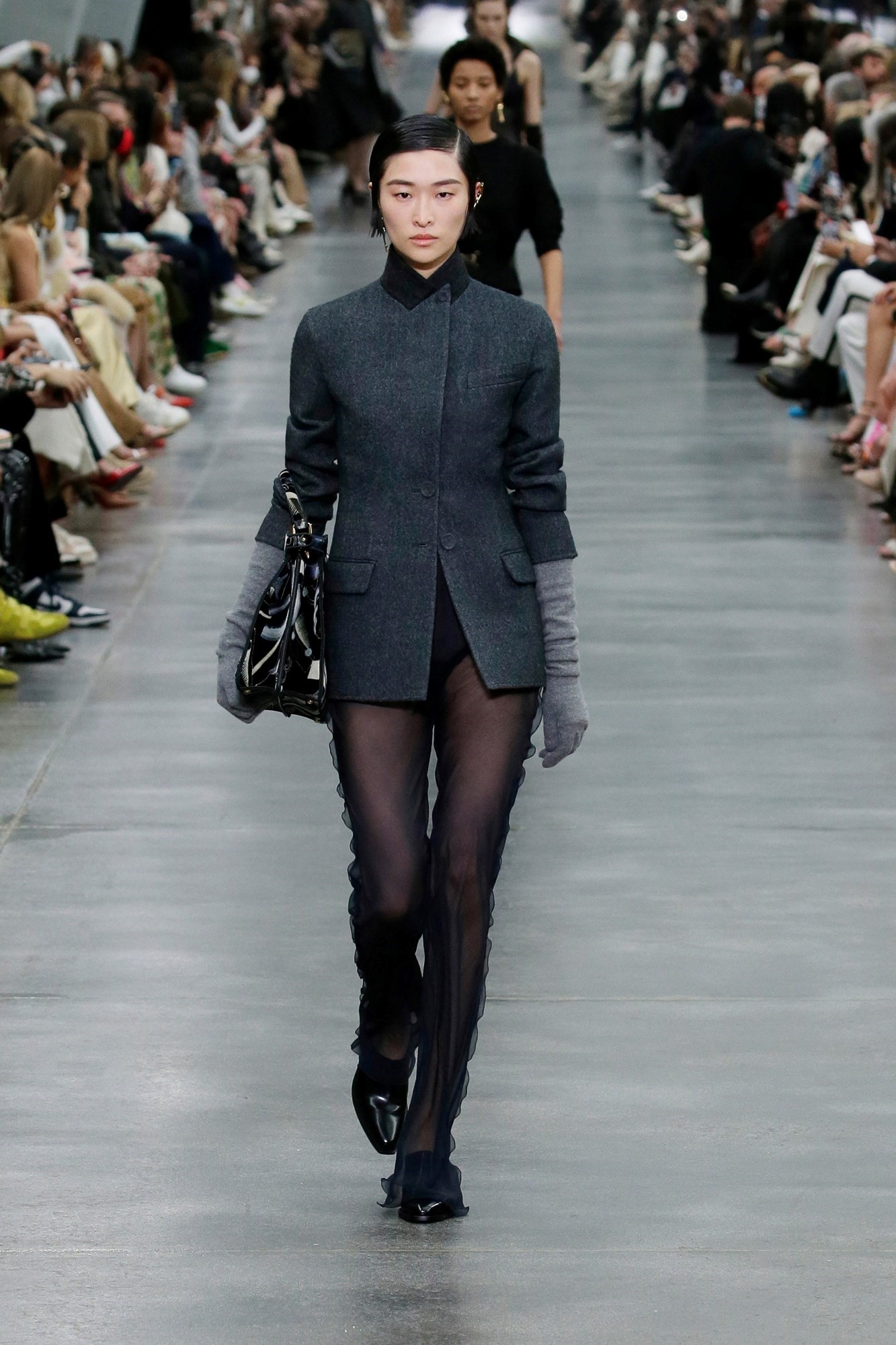
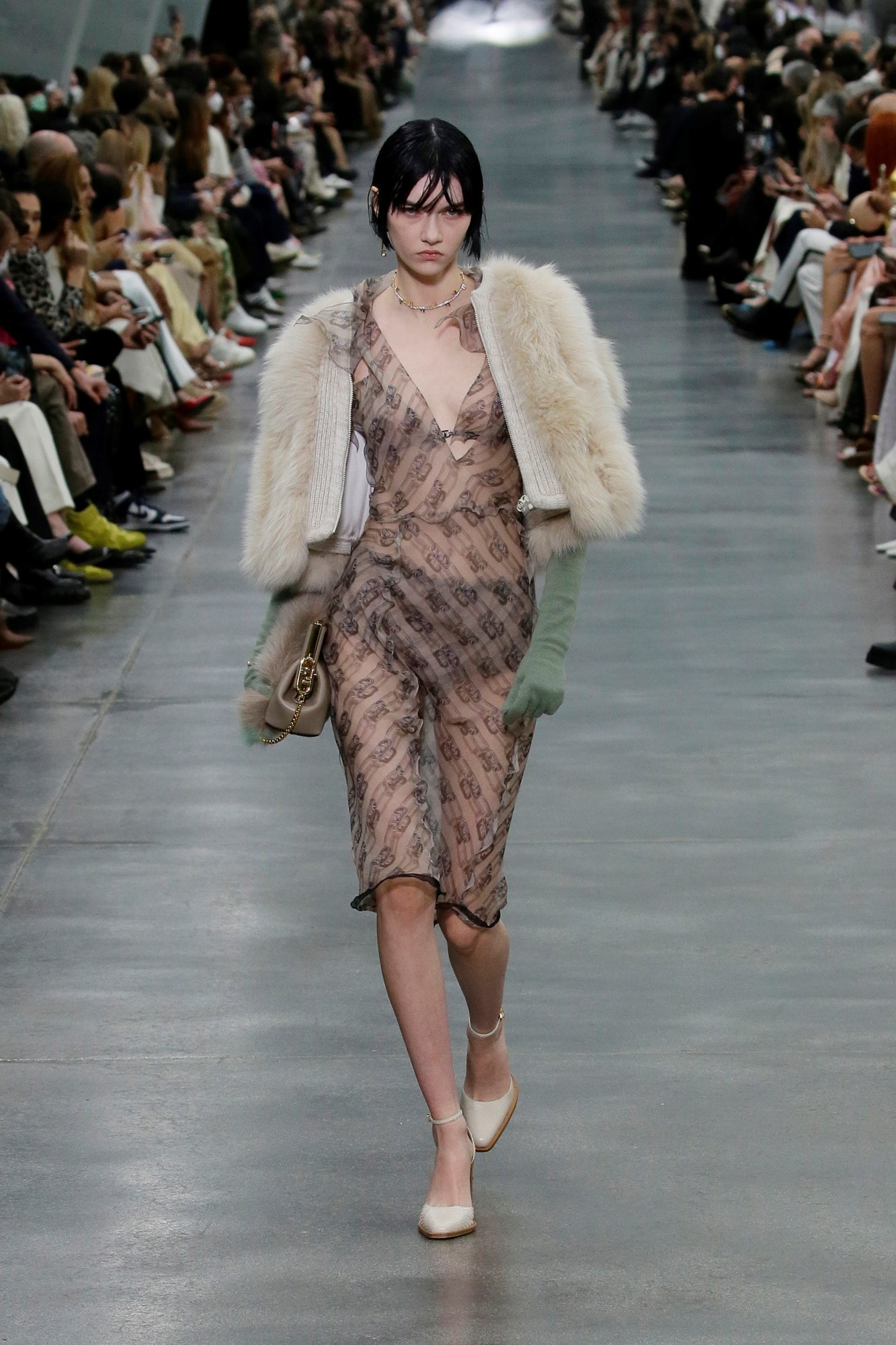
Another was in the 1980s, when Karl Lagerfeld had begun revitalising Chanel and founded his own label. He was working more than perhaps anyone else in fashion, dashing out collections across Europe, and his work was febrile and highly influential. For Spring/Summer 1986, he created a collection inspired by the Memphis Group, the design movement that has since become something of a fashion cliche. But Lagerfeld was a Memphis fanatic - his apartment in Monte Carlo was, at that time, full of the stuff, including Masanori Umeda’s Tawaraya bed – which is, basically, a Beetlejuice-striped boxing ring.
“These are collections which, although they come from the past, feel very now,” says Jones of the two he chose to reference. The story goes that Delfina Delettrez, the Fendi scion who designs jewellery under her own name and for the house, walked into the studio wearing a blouse from that 1986 collection. As for the ruffle-rimmed Spring/Summer 2000 collection? There’s just something about that collection now, it seems: I know a bunch of vintage dealers who selling it handsomely. And the clothes still look great.
The newness here was the combination of that Lagerfeldian lightness, that barely-there chiffon and bold print, with the strength of Jones’ wheelhouse. He’s spent decades tailoring men’s suits, and in the process pulling tailoring apart, reworking and reimagining it, while also becoming a dab hand with its techniques. Here, he reworked it for a woman’s body – and the result was dynamite. Who doesn’t need a great coat, or a great suit, or the perfect pair of trousers? There were plenty to choose from, alongside men’s shirts reworked as bustier tops and shirt dresses. The resultant collection injected plenty of Jones into the Fendi mix, fusing the past of the house with its future, to create something totally relevant for now.
